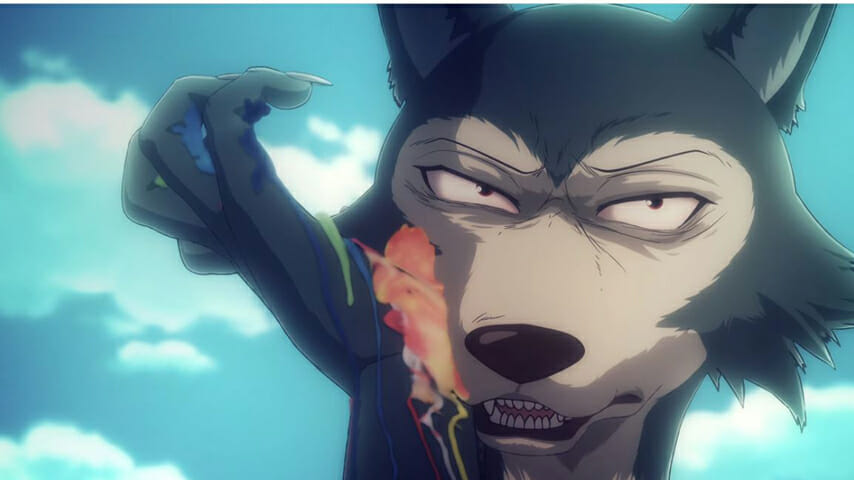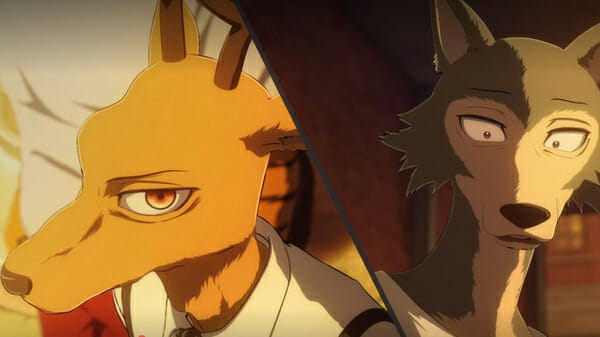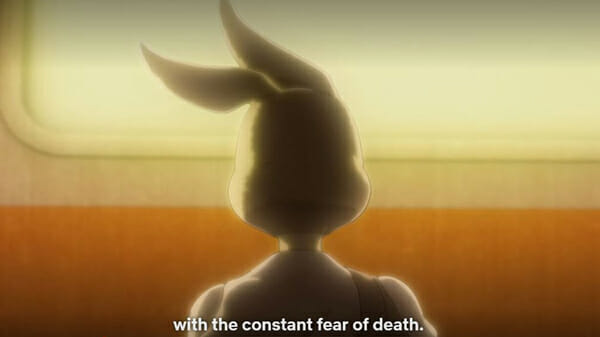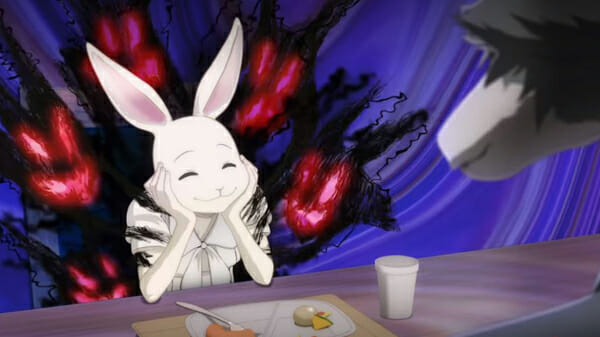Why Netflix’s Beautiful, Unique, Underrated Beastars Is Worth Exploring
The show’s beautiful CG animation never undercuts tense character melodrama.
Images via Netflix/Orange Studio
Beastars was the best anime to come out of 2019. This may be a controversial take, given last year was marked by sumptuous animation no matter where you looked—from the fluid, ballet-like fights of Demon Slayer and Mob Psycho 100 II to the high-stakes tension of The Promised Neverland and Vinland Saga, it was perhaps my favorite recent year for anime. Yet somehow, despite offerings from Kunihiko Ikuhara and Shinichiro Watanabe, two of my favorite directors (some of their finest work respectively, too), the oddly evocative melodrama of a wolf, rabbit, and deer captured me the most.
The thing is, Beastars isn’t going to be for everyone. Known for their unique take on CG, animation studio Orange’s breakout work was an adaptation of Haruko Ichikawa’s Land of the Lustrous, which (to undersell it), is a grittier Steven Universe complete with gem-people, glistening body horror, and unsettlingly ambiguous storytelling.
Though public opinion has since changed, Land of the Lustrous was damn near universally hated upon its release. Not only is the style more avant garde than typical anime fare, but Orange uses animation in a way completely unlike how others had used it before. Typically, it’s deployed to cut costs (look no further than the meme-worthy bears in Golden Kamuy or the unfortunate 2016 Berserk adaptation) or, unfortunately, it ages poorly, as with Ghost in the Shell: Stand Alone Complex or Appleseed. Orange, instead, uses CG with notions of 2D style. It’s a turning point for how we interpret CG; it can be just as fluid and communicate full horizons, texture, and light just as well as traditional animation. It just depends on how it’s utilized, and if that utilization is artful, committed, and lifelike.
For that reason, I couldn’t imagine Beastars animated any other way—every space feels lived in, and the show often shifts to different animation styles and abstract ways of conveying emotion. Just a fluttering of ears or a swishing of a tail is sometimes plenty to communicate what’s going on in a character’s head, and it’s rendered with such an urgency and twitchy attention to detail. The opening is an utterly delightful piece of stop motion with two felt dolls of characters Legoshi and Haru, and one of the show’s most visually and emotionally rousing moments is a dream sequence by guest animator Yoko Kuno.
Yoko Kuno was the artist behind this AMAZING dream sequence in Beastars #07. Leaving the CGI setting for the oniric world and embracing a really talented and idiosyncratic animator was such a neat idea. Morphing animation is always beautiful to watch, so in love right now pic.twitter.com/HMC70SOMKm
— Ashita (@AshitanoGin) November 21, 2019
Beastars lacks the resplendency of Land of the Lustrous’ animation, in part because it’s not necessary. Instead, it translates the manga’s original Edward Gorey-inspired scribbly style beautifully, with cues that allude to each animal’s natural instincts (the breathing in of scents becomes a psychedelic experience). This is a story about a grey wolf named Legoshi who navigates adolescence at an integrated school for carnivores and herbivores. If it sounds a bit like Zootopia, well, you’re right, bolstered even further given his love interest is a small rabbit who desires to be taken seriously despite her species. Beastars did begin serializing in fall of 2016, so maybe mangaka Paru Itagaki did take some cues from the Disney film—any similarities are merely surface level, though, and that’s clear once you’re minutes into the first episode.
If there was one binding force within the world of Beastars, it would be the imbalanced forms of power between carnivores and herbivores. The story opens with the grisly murder of an alpaca student, Tem. Whether there was a palpable schism before this event between students or not is questionable, but it certainly sets every species off into paranoia. Legoshi, our main character, is a member of the drama club which has become known for its collaborative and positive body of members ranging from tiny squirrels to hulking tigers. The drama club is the perfect staging for much of the show’s themes—not only do we see the struggles of herbivores, eternally underestimated and living in constant fear of devourment, but we see the prejudices and stereotypes used against carnivores who, for the most part, are incredibly docile and peaceful.
Legoshi’s perfect foil lies in Louis, the red deer leader of the drama club. He’s stately, a little rude and stubbornly confident. Everyone at the school admires him, but Legoshi sees that his conviction derives from his overwhelming desire to overcome stereotypes. He wants to be the next “Beastar,” a vague title ascribed to those who unite the herbivores and carnivores in some meaningful way, a bit like a more heroic Nobel Peace Prize winner. Louis carries with him an innate sadness he hides from the world communicated expertly through his combative yet delicate interactions with Legoshi as well as the continually emotional animation—Louis’ eyes can, in a flash, portray deep sorrow, sharp ambition or vulnerability. He envies Legoshi for his natural strength and gritty instinct, but chastises him for his amenable and shy personality; as far as Louis can see, it’s a mask, a convenient excuse for Legoshi to not participate in society as he should.

The interplay of each character’s outward persona and natural instincts is often a point of contention. Bill, a tiger in the drama club, is a slave to his own instincts and tugs on the morality of living truthfully. Is it really so bad to live earnestly? Or, to be a principled member of society, do we need to stifle our primeval appetites?
We see it with Haru, too, who has one of the most sensitively drawn arcs in the show. A dwarf rabbit, Haru resents that people see her as cute, frail, and weak. As such, she behaves promiscuously, fetishizing herself and allowing any male who’s interested in her to have sex with her, even if he’s in a relationship with another student. She’s never slut-shamed by the show for this, either. Instead, the show cleverly asks if her own self-sexualization is something she desires or another role she’s forcing herself to play to escape biased categorization. Haru purposely isolates herself from others and skirts around opening up to anyone, a further stratification in a school where every student already fails to see past the surface of their fellow peers. It’s extremely human, despite everything, and resonates to the true teen experience of budding sexuality and self-perception.


All three of our leads are endlessly compelling, and where you might expect the show to dip into trite heteronormative love triangle tropes, they rise above again and again. Instead, we’re left with three protagonists who are inextricably linked and admire, use and relate to each other in complicated ways. Legoshi and Louis’ passion for each other in particular shines—the two have a relationship we fail to see between two male characters in even the most mature prestige dramas. Fans of the manga know that the journey of these three well-extends past what we see in the show (by this point, it’s brilliantly off the rails), and by the last episode, you’re well aware Itagaki is a lot more ambitious than the show lets on initially. Even in just 12 episodes, the show manages to shock—it’s a lot more than just a coming-of-age story with a well-developed world and dark moments that are reminiscent of the taboo landscapes of both Oyasumi Punpun and Skins.
Also of note is how far Beastars manages to stretch its rather simple core force—the food chain. The act of consumption winds up representing so many different things, whether in a literal sense or a more foggy, never offensively hackneyed allusion. Through this metaphor, the show communicates issues of drug addiction, race, gender roles, sexuality, societal pressures, violence, and an endless list of other themes endemic to any coming-of-age tale. It’s impressive how seamlessly Orange and Itagaki are able to do this without feeling rote.

Now that Beastars has made it to Netflix complete with an English dub, there’s no excuse not to engage in the wonderfully bizarre, pulse-pounding world Legoshi lives in. Maybe afterwards, you’ll revisit the gently queer Land of the Lustrous. CG deserves a fair chance—it can be just as enchanting, if not more, than the 2D anime we all cherish.
Austin Jones is an intern at Paste. He writes about music, videogames and queer issues. He’s an avid fan of electronic and pop music, horror games, Joanna Newsom and ’80s-’90s anime. You can follow him on Twitter @belfryfire.
For all the latest TV news, reviews, lists and features, follow @Paste_TV.